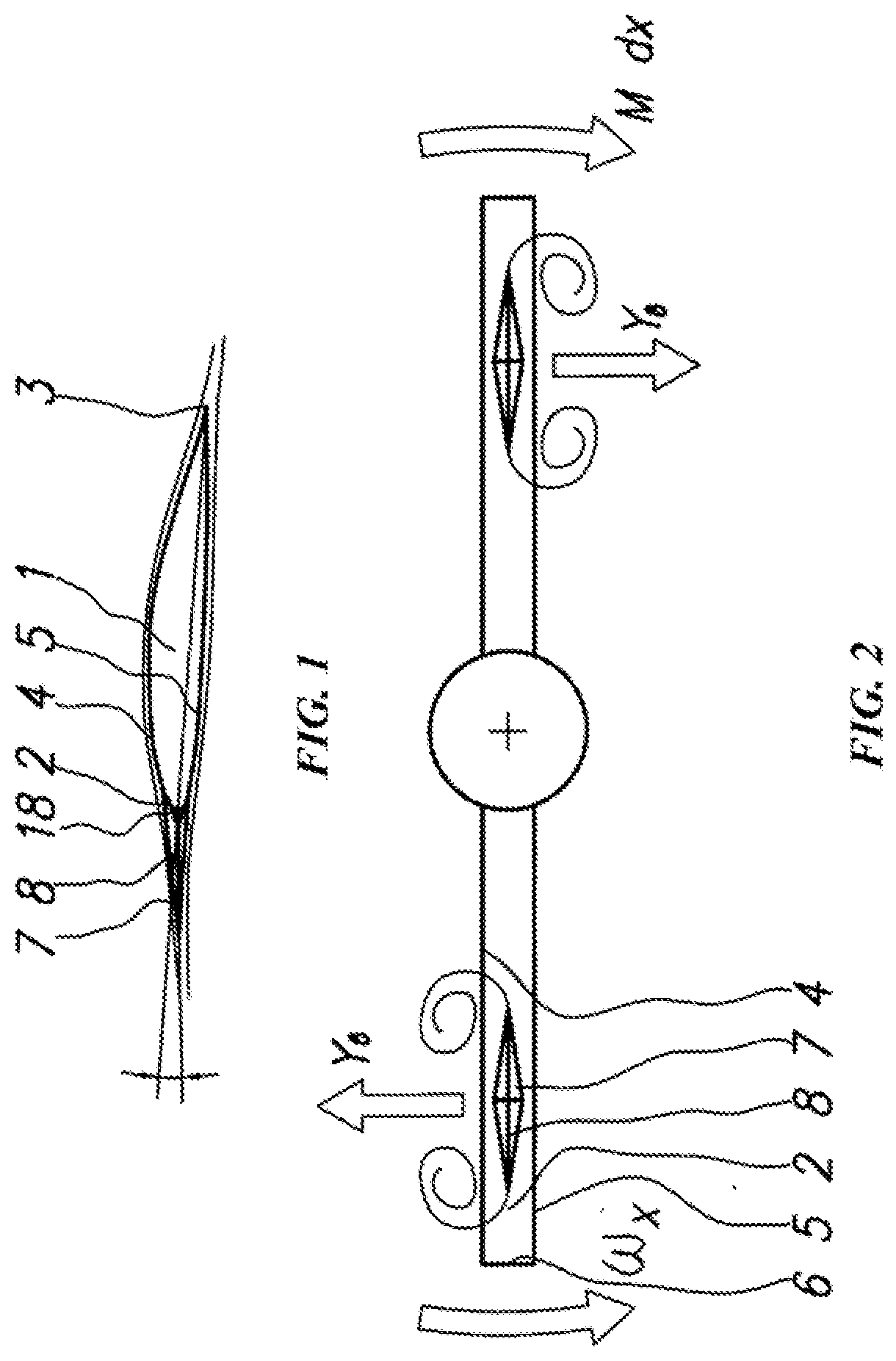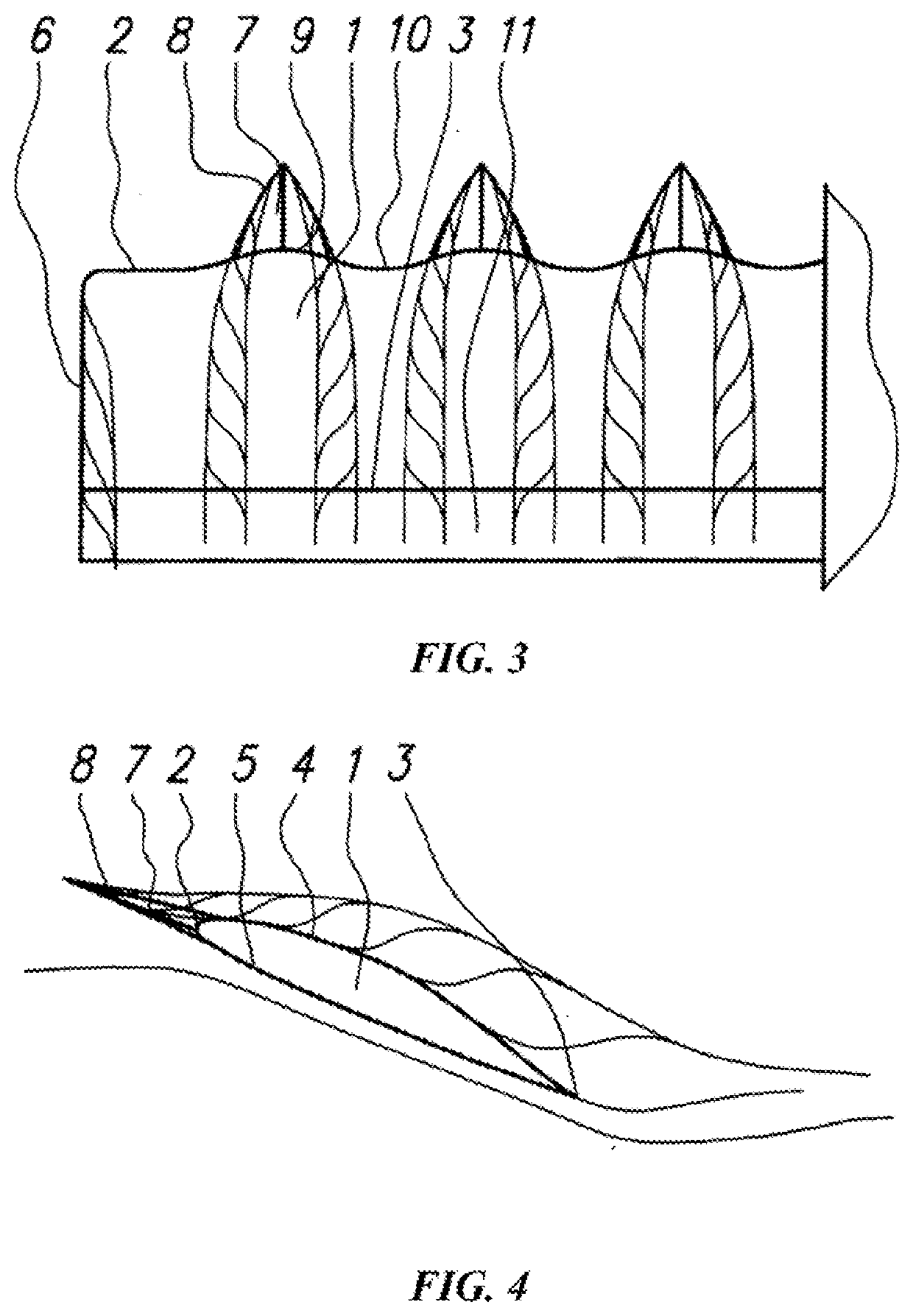Aerodynamic surface of an aircraft
- Summary
- Abstract
- Description
- Claims
- Application Information
AI Technical Summary
Benefits of technology
Problems solved by technology
Method used
Image
Examples
first embodiment
[0057]An aerodynamic surface of an aircraft according to the invention shown in FIG. 1 is made in the form of a console and comprises a main part 1 having a cambered airfoil section, and having a leading edge 2, a trailing edge 3, an upper side 4, a lower side 5 and a tip 6. Vortex generators made in the form of teeth 7 having edges 8 disposed along the length of the teeth 7 are arranged on the leading edge 2. The teeth 7 are deflected towards the smallest degree of curvature of the airfoil section of the main part 1.
[0058]It is also possible to make the main part 1 with a wavy leading edge 2 (FIG. 3), which includes cyclically repeating protrusions 9 and recesses 10, wherein the teeth 7 are disposed on the protrusions 9.
second embodiment
[0059]An aerodynamic surface of an aircraft according to the invention shown in FIG. 7 is characterized by a movable mounting of the tooth or teeth 7 and the presence of a deflectable trailing edge assembly 11, wherein the tooth 7 and the deflectable trailing edge assembly 11 are mounted on the main part 1 by means of hinges 12 and are provided with pylons 13. The pylons 13 mounted on the teeth 7 are kinematically connected to the pylons 13 of the deflectable trailing edge assembly 11 by means of at least one linkage 14, wherein the main part 1, the pylons 13 and the linkage 14 form a parallel-link motion.
third embodiment
[0060]An aerodynamic surface of an aircraft according to the invention is characterized by the implementation of the main part 1 in the form of a leading aerodynamic member 15 and a trailing aerodynamic member 16 disposed one after another. The teeth 7 are disposed in the gap between these aerodynamic members, forming trapezoidal windows 17 tapering in the flight direction. The side walls of the trapezoidal windows are the incoming edges 8.
[0061]The aerodynamic surface of the aircraft according to the first embodiment of the invention operates as follows.
[0062]At low positive angles of attack of the main part 1 of the aerodynamic surface 15, the teeth 7, due to their deflection towards the smallest degree of curvature of the airfoil section of the main part 1, are strictly streamwise and have a near-zero angle of attack (see FIG. 1), which reduces a drag and increases a lift over drag ratio, which is especially important with the laminar foil of the main part 1, the foil having a Cy...
PUM
 Login to View More
Login to View More Abstract
Description
Claims
Application Information
 Login to View More
Login to View More - R&D
- Intellectual Property
- Life Sciences
- Materials
- Tech Scout
- Unparalleled Data Quality
- Higher Quality Content
- 60% Fewer Hallucinations
Browse by: Latest US Patents, China's latest patents, Technical Efficacy Thesaurus, Application Domain, Technology Topic, Popular Technical Reports.
© 2025 PatSnap. All rights reserved.Legal|Privacy policy|Modern Slavery Act Transparency Statement|Sitemap|About US| Contact US: help@patsnap.com



